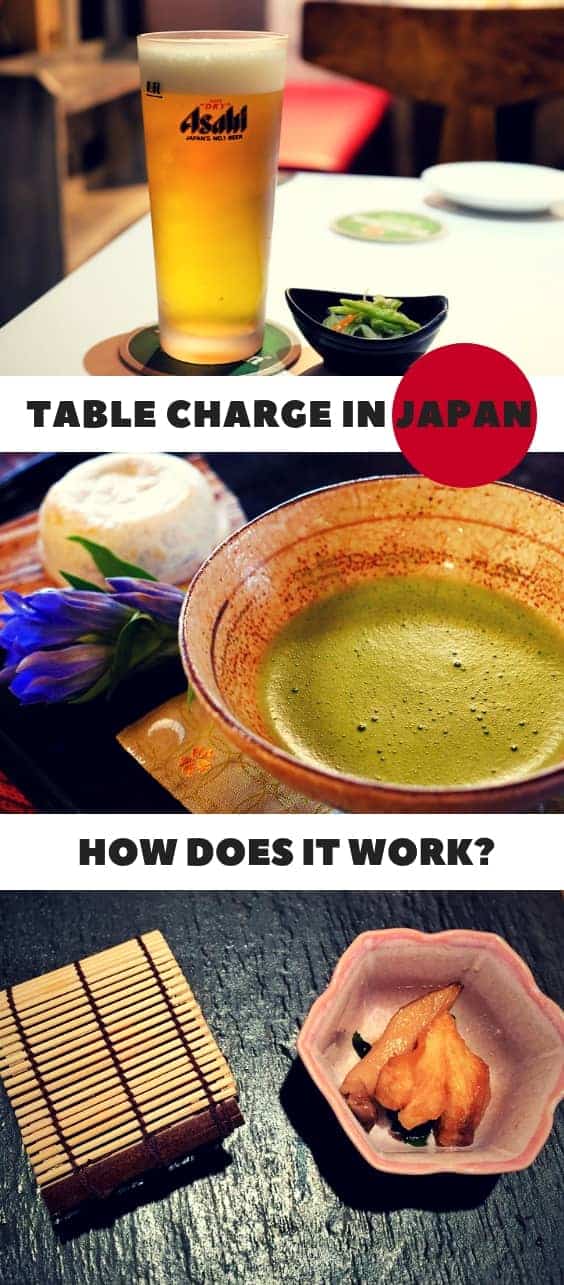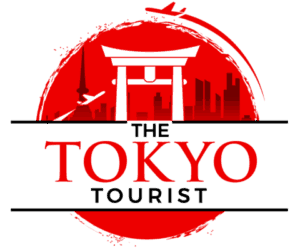Deprecated: mb_convert_encoding(): Handling HTML entities via mbstring is deprecated; use htmlspecialchars, htmlentities, or mb_encode_numericentity/mb_decode_numericentity instead in /home2/thetoky7/public_html/wp-content/themes/acabado/functions.php on line 2119
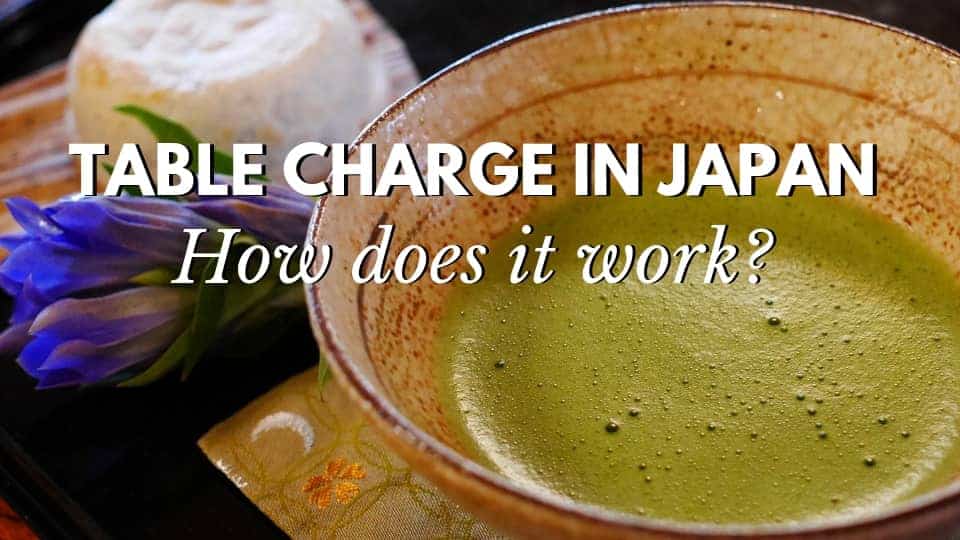
First of all, what is it called? Table charge? Service charge? Seating charge? Cover charge? As the title says “table charge” is probably the best translation of what’s called Otoshi (お通し) or Tsukidashi (突き出し) in Japanese. So what is this strange table charge in Japan? Some described it as a “compulsory appetizer” because you’ll get it whether you want it or not!
Otoshi is a small dish (hot or cold) you’ll get served right after you’ve ordered your food or drinks. It can be anything from a pickled salad, a cube of ice cold tofu to a small bowl of warm miso soup. The cost is usually $2 to $6 per person, and they give you this compulsory appetizer – which is really a table charge – for a few reasons:
- Cultural: In Japan, you eat snacks while you drink!
- Historical: There are a couple of different theories, I’ll cover them later in the article.
- Commercial: It helps drive the bill up!
How Does it Work?
It’s quite easy. You enter the establishment, take a look at the menu and place your order. Then, a couple of minutes later the waitstaff will bring the otoshi along with your drinks. Don’t expect any explanation of why you’re getting a dish you didn’t order and not even what the serving is unless you ask.
When they serve this often weird appetizer you can often hear they drop in the word “otoshi,” and now you’ll know what’s going on! At the end of the night when you get your check, you can see an item of ¥200 to ¥700 ($1.5 to $6) multiplied by the number of people in your party. This is the Japanese table charge.
Can you drink the tap water in Tokyo?
Where is Otoshi Served?
The key here is alcohol. It’s usually served in bars and restaurants where you can buy alcohol. It’s most prominent in the traditional Japanese bars called izakayas. This is first and foremost a place for drinking, but snacks and food are an integral part of the izakaya experience. So expect otoshi in the form of some slimy beans or pickled vegetables! You don’t get it at fast food restaurants like McDonald’s, Taco Bell and the Japanese fast food chain Freshness Burger.
You’ll get otoshi and a table charge all over the country. From the metropolitan Tokyo to the tiny izakayas in the rural countryside.
Is it Called Otoshi or Tsukidashi?
It’s actually called both depending on where in Japan you are. Otoshi (お通し) is probably the most common name for it, and I know for a fact that Otoshi is almost exclusively used in the Kantō region which of course includes Tokyo. And as far as I know, otoshi is also used north of Kantō and on the island Hokkaido.
Then what about tsukidashi (突き出し)? From what I’ve been able to find from my research tsukidashi is commonly used in the Kansai region and the West of Japan. To be sure I checked with a friend of mine from Osaka and he confirmed that he was more familiar with tsukidashi.
As people move around and also get impulses from TV, radio and the Internet, there are no longer specific regions where you only use one word or the other. But in general, you could say it’s called otoshi from Tokyo and eastwards while they use tsukidashi in western Japan.
What Do Otoshi and Tsukidashi Mean? What’s the Literal Translation?
The literal translation of otoshi is “to pass.” I couldn’t really understand what “to pass” had to do with a compulsory appetizer so I asked my friend to connect the dots for me. He explained that one theory is that it originally meant “to pass the order to the kitchen” so when you get your otoshi it’s proof that the kitchen received your order. I don’t know if ordering food and not receiving it used to be a common problem back in the day, but I can surely attest to it not being a problem nowadays! The Japanese waitstaff is very attentive and usually provide excellent service.
This is another possible explanation I found online:
Looking at the kanji character used in the word, otōshi can be thought of as literally meaning “passing through” (通る tōru), or to make a path between two places (通す tōsu). This lends weight to notion that the miniature dish was originally intended as something to occupy the customer and keep their hunger at bay between the time they place their order and when their food arrives.
The literal translation of tsukidashi is “sticking out.” Again, I needed my friend to give me some background. His answer (more like a theory!) was: “Since it sticks out irrespective of the customer’s order.” Not sure if I buy that one!
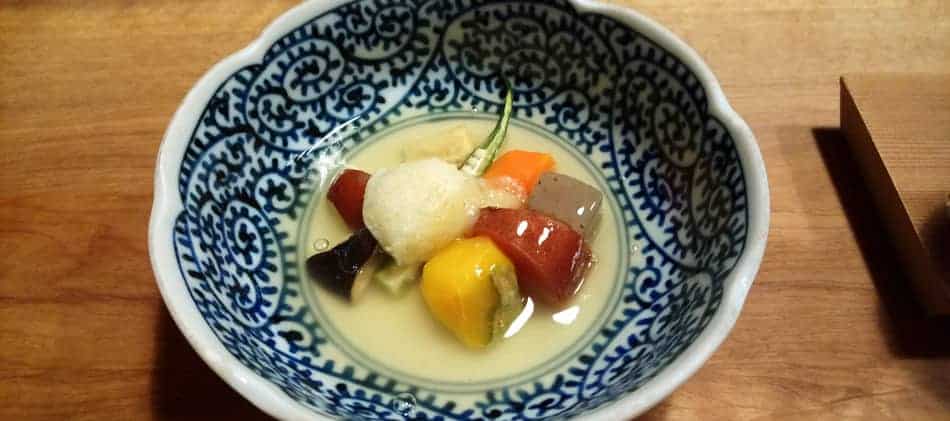
Why Did Otoshi Start?
No one knows exactly, but there are a number of different theories. In my opinion, it’s probably a combination of all of them. Let’s just quickly run through some of them.
Cultural: In Japan, you snack while you drink. That’s how it goes, end of discussion. If this is your starting point, I can see something like otoshi come into existence. If everybody eats some sort of snack anyway why not make a bunch of it and make it mandatory?
Historical: When you look at the literal meanings you have a couple of theories. One is that the otoshi is proof that your order got delivered to the kitchen. The other is that the otoshi is a fast and easy filler you get while you wait for your main order.
Commercial: I think this is the most important one. Izakayas used to be small bars with few tables. If you have strict limitations on the number of guests, you’re able to serve it’s important that you get good value out of the guests you do serve. So to drive up the bill, they slap on a compulsory appetizer per person, and with a party of four, they make an extra $8 to $24.
Can You Refuse the Otoshi and Thus the Table Charge?
There’s some disagreement here, but the answer is actually: Yes, in theory. When the otoshi arrives at the table, you can refuse it. You can not do it after you receive the check, even if you haven’t touched it.
So legally this “compulsory appetizer” can be refused, but does that mean you should do it? I had a chat with my friend and asked about his feelings on the subject. This is a copy/paste from our conversation on Facebook:
Me: Would you ever refuse otoshi?
Masaya: I have never heard anyone refusing it
Masaya: I would never ever do it
Me: What if I do it? 🙂
Masaya: And I’d hate to see anyone at my table refusing it. It’d spoil the dinner!
As you probably know, Japan is a very polite society where they value collectivism and not stepping out of line. To refuse otoshi is a major faux pas and personally, I would never ever do it. Not only would I find it extremely embarrassing (not worth it to save $5!) but when I visit other countries and cultures I like to assimilate and play by the local rules.
When in Rome, do as the Romans do! Besides, even though I’ve had a lot of weird otoshi, I really like the tradition. Let’s take a quick look at what’s good about the Japanese table charge.
Nice Things About Otoshi
I don’t mind this phenomenon at all. But I must admit I’m pretty easy-going when it comes to adhering to local customs. For me, it’s one of the main reasons I travel. I like to experience new cultures and different ways of doing things. What I like about otoshi:
- I like snacks with my beer! The only thing I love more than to eat and drink separately is to eat and drink in combination. Izakayas are perfect for this as they usually have a plethora of small and simple dishes. The otoshi is a good way to start off!
- If I’m starving, it’s nice to get something right away to curb the hunger.
- In general, I think it’s important to have some food with your alcohol to avoid being a slurring fool.
- The otoshi is an excellent way to try out new dishes you usually wouldn’t order. I still remember the time I got slimy squid legs AND LOVED IT!
Can You Order More Otoshi?
I’ve only done this once myself (the squid legs!), and then I just paid two table charges, but I know some places offer free refills, for example, miso soup. If you get something, you really love I would definitely ask what it’s called (so you can order it in the future) and possible to get some more.
Although there can be somewhat of a language barrier, I would still ask. People usually like it when you appreciate their food. And you’d be amazed how much you can communicate with just a few English words and some hand gestures.
Can You Chose Your Otoshi?
This is really not common. The otoshi is usually made on a daily basis, and the same otoshi is served the whole day. If you have some dietary restrictions or allergies, you could always ask to get something else.
One time I went to a bare with a vegetarian friend of mine and our otoshi consisted of some sort of salad in vinegar and the small cute fish you see below. She decided only to eat the salad and not touch the fish. I think a pragmatic approach will get you far.
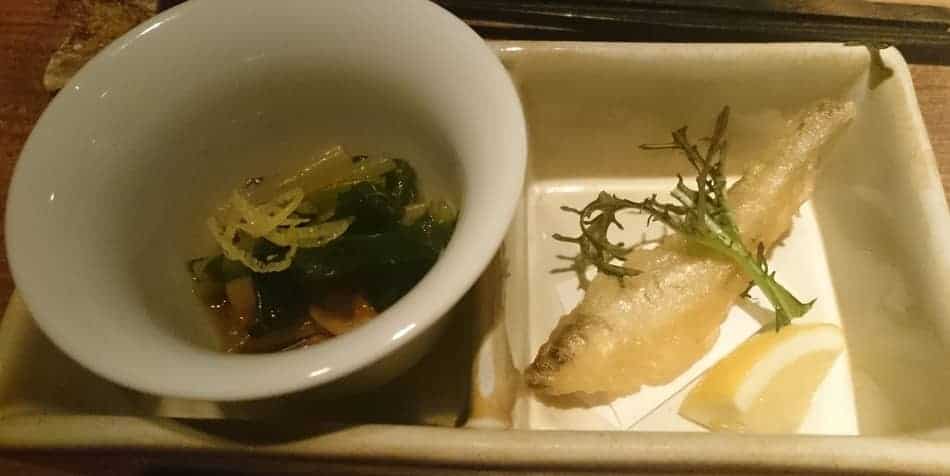
Do You Have to Eat the Otoshi?
No, you don’t have to. If you’re full or don’t like the otoshi, you don’t have to eat it. No one will get offended. But on a personal note, I would suggest you try different stuff and venture out of your comfort zone. I have to admit when I got the small slimy squid legs I wasn’t thrilled at first but I tried, and I liked it. Maybe you’ll find a new dish you really like?
But just remember, even if you don’t touch your otoshi you still have to pay for it.
What’s Usually Served as Otoshi?
They love to serve pickled dishes with vinegar. Check out tsukemono to see a common type of otoshi.
I’ve also eaten a bunch of shiokara which is minced and fermented seafood. To be honest, this is not my favorite. It’s on par with the ice cold tofu you sometimes get!
Soups are easy to serve, and miso soup is quite common, but I’ve also had other soups like chicken and vegetable soup. My favorite is probably seared meat with vegetables though!
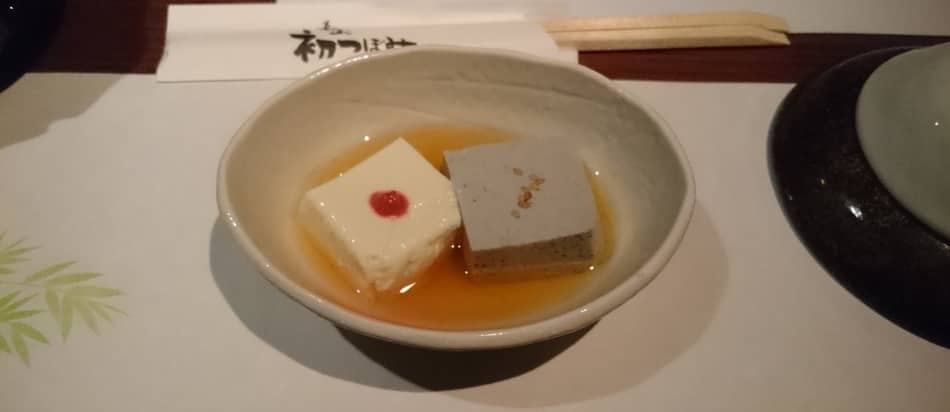
Do you still have questions about how the table charge in Japan works? Let me know in the comments down below!
